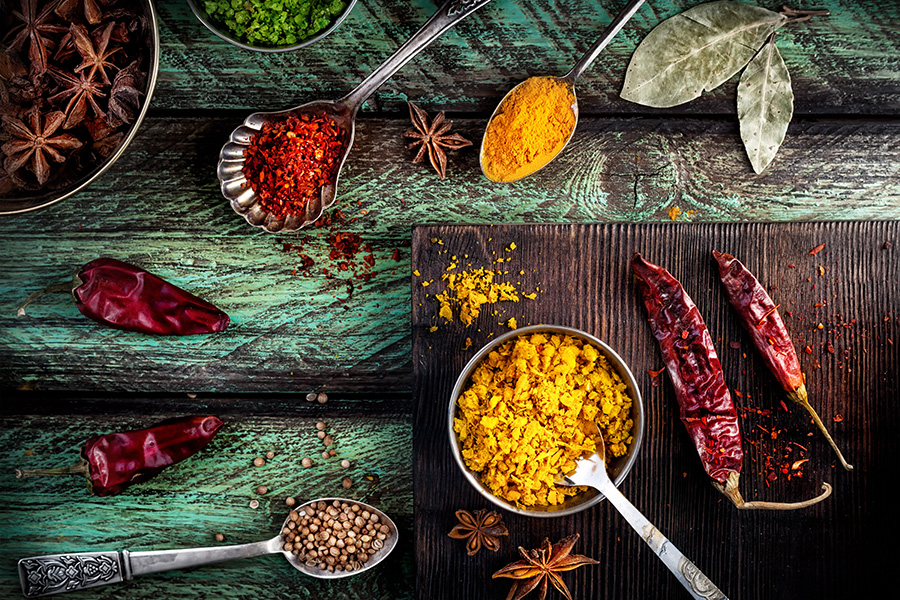Ask the Expert: Will an Ayurvedic Diet Cure My Winter Blues?
We chatted with the lead Ayurvedic Counselor at Boston's Down Under School of Yoga in Brookline to get the low-down on this ancient Indian practice.

Photo via Getty Images
If you’re starting the new year with some winter doldrums and struggling to meet unrealistic fitness goals, maybe what you need isn’t a laundry list of resolutions but a fresh perspective on health. Insert: Ayurveda.
Everything that goes on in the universe, and in our lives, is a transfer of energy. We put food into our bodies to create energy. We interact with one another and either pass on energy or take energy. And as the seasons change, we experience a monumental shift in energy. Think back to the summer: You probably had a lot more energy during the dog days of August than you do now. This is what the ancient Indian practice of Ayurveda is all about: Balancing energy systems with the cycles of nature.
It can be a hard thing to conceptualize since city living has become so far removed from nature. Plus, Boston is teeming with technology. Even the wellness industry is filled with new and innovative ways to help us become healthier, stronger, and better—faster. And there’s nothing inherently wrong with the push for more, but at what point do we sacrifice intuition for innovation and the betterment of the collective for solitary prestige?
We chatted with Claire Este McDonald, nurse and lead Ayurvedic Counselor at Boston’s Down Under School of Yoga in Brookline, to get a better understanding of Ayurveda and how to apply it to everyday life—especially, and most importantly, while living amidst the hustle and bustle of a city.
Ask the Expert: Will an Ayurvedic diet cure my winter blues?
The answer: Maybe. But remember, diets don’t work. It’s about consistent and healthy lifestyle habits, which is what the ancient Indian practice of Ayurveda is all about.
To understand Ayurveda, you have to understand the five elements of nature—space, air, fire, water, and earth—that, combined, make up the three doshas, or energies, that all Ayurveda principles rely on. The three doshas are Vata, Pitta, and Kapha. We all have some aspects of each dosha, but for the most part, lean heavily towards one. There are multiple online questionnaires to help you find out which doshas you’re made of—but like any personality test, take it with a grain of salt.
McDonald explains that Vata energy embodies the elements of space and air and is the energy of movement. Pitta reflects the qualities of fire and water and resembles transformation, while Kapha embodies water and earth and personifies structure.
She points out that none of us are the same, as in all things. By understanding which energies we are made up of, we can better maintain our nutrition and exercise to instill balance throughout the seasons, because as we move throughout the different seasons, these energies are higher during different times.
“In the fall we begin to have more roughness and coldness in the air, or Vata energy,” McDonald says. “It becomes very mobile, light, and dry, and those who have higher Vata qualities might notice dryer skin, stiffer joints, a harder time getting going in the morning, and your energy might become more erratic.”
Conversely, in the summer, Pitta energy is higher and we crave lighter foods, our moods are boosted, and our overall morale is a little livelier. Which seems rudimentary, but there are lessons to be garnered through Ayurveda. And as McDonald tells me, it all comes down to how well we’re digesting our food.
“In the winter, we need nourishing foods that are grounding,” she says. “It’s why our bodies crave heavier and denser foods like soups and stews.” She recommends incorporating spices like ginger, turmeric, coriander, and cumin to your meals as well as fennel. And she says when you sit down to eat, don’t hold back—eat, and eat a lot.
Grounding exercise in the winter is also a good idea. “But overexercise is not good,” she adds. “Do things you are drawn to and exercise to the point where your upper lip becomes sweaty. It cleans the skin and the channels of the body to improve circulation, and at the end of the day, it’s basically a way to get your bowels moving.” Because, as stated earlier, it’s all about how well you’re digesting your food.
In the summer, all the opposites are true. You might not be as hungry, McDonald says, so you want to consume foods that stimulate “digestive fire”—what she calls our ability to digest food in an appropriate manner. Foods that fit the bill include parsley, coriander, and cilantro, and she suggests also taking advantage of the bountiful harvest of fresh fruits and vegetables during this time of year.
The basics of Ayurveda are simple: Eat with the seasons and listen to your body. But there’s a whole system of practices and diagnostics beyond nutrition and exercise to explore that an Ayurvedic practitioner can help you with. And as with all things related to a healthy lifestyle, it’s about creating a routine you, and only you, can maintain.
“Sometimes we act as if we’re the only people that exist in the universe,” McDonald says. “The universe has an impact on everyone and energy is constantly flowing—it cannot be created nor destroyed. It’s simply transferred. How is it flowing through you and what can you do to optimize it? We have more control over our health than we realize.”


